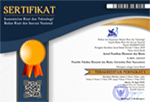MINIMASI BIAYA PRODUKSI PADA PRODUK WINKER RELAY MELALUI PERENCANAAN PRODUKSI AGREGAT
DOI:
https://doi.org/10.33633/jpeb.v4i2.2556Abstract
The purpose of this research is to determine demand forecasting on relay winker products and to determine the aggregate planning of relay winker products that produce minimum costs. The method used in this study is a comparative quantitative method. The data used in conducting aggregate planning are data from forecasting calculations with the chosen method, forecasting is calculated using several methods, namely the Moving Average, Exponential Smoothing, Double Exponential Smoothing, Quadratic and Linear Regression methods. Select this method by looking for the MAPE value. The method that has the smallest MAPE value is Double exponential Smoothing with a value of 2.7%. Aggregate production planning is carried out for 2017 with the method of transportation (least cost), permanent labor and level strategy. The results of data processing show the best method for aggregate planning is transportation method (least cost) which has the lowest cost of Rp. 9,858,625,445.Downloads
Published
How to Cite
Issue
Section
License
The copyright of the received article shall be assigned to the journal as the publisher of the journal. The intended copyright includes the right to publish the article in various forms (including reprints). The journal maintains the publishing rights to the published articles.
This work is licensed under a Creative Commons Attribution 4.0 International License.



.png)









